The 25th Japan Media Arts Festival Award-winning Works Exhibition was held from Friday, September 16, to Monday, September 26, 2022. During this period, related events including talk sessions and workshops took place. At the National Museum of Emerging Science and Innovation (Miraikan), on Saturday, September 17, a talk session on the Grand Prize-winning entry in the Entertainment Division, Naoki Urasawa presents Manben neo -Yoshikazu Yasuhiko-, which is an episode of a TV program was held with UEDA Katsumi (producer of the award-winning work) and KURAMOTO Mitsuru (planner of the work), along with URASAWA Naoki (manga artist), the originator of the program, as a guest speaker, and ITO Yu, an associate professor at Kyoto Seika University and the festival’s Manga Division selection member, as facilitator. This article reports on the talk session.
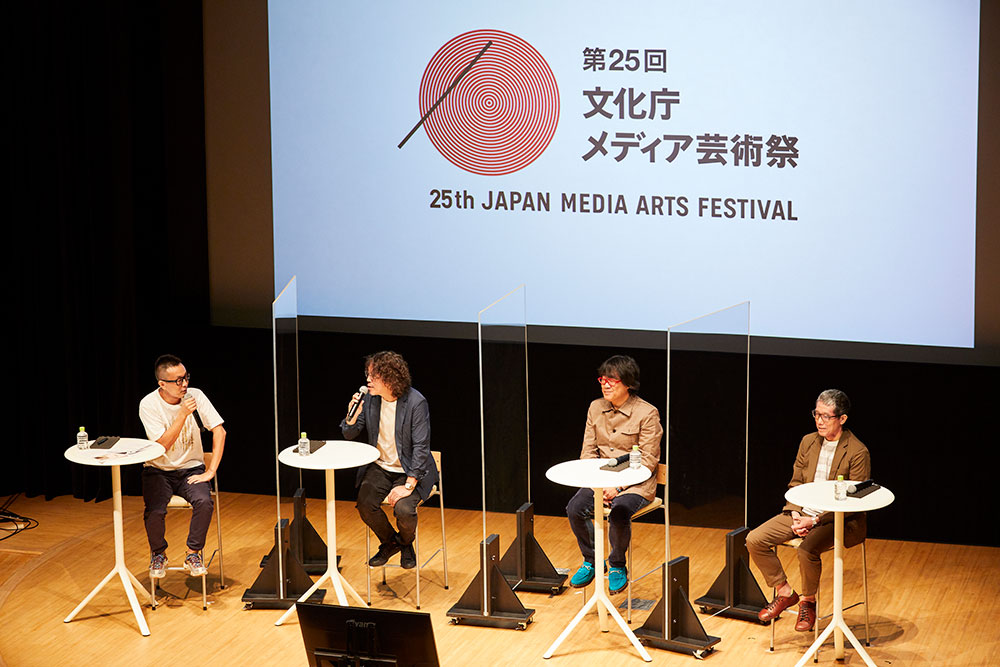
How do manga artists draw manga at work? And how is the process of creating manga? To answer the questions, a documentary program, Urasawa Naoki no Manben (Naoki Urasawa presents Manben; hereinafter called Manben), visits various manga artists to show their production processes and drawing techniques to the world, which exist as many as the number of manga artists. The latest season of the program is titled Urasawa Naoki no Manben neo (Naoki Urasawa presents Manben neo; hereinafter called Manben neo). The program has featured 32 leading manga artists as of October 2022. The Grand Prize was awarded to an episode of the Manben neo broadcast on June 9, 2021, featuring YASUHIKO Yoshikazu, a manga legend who had also built an era as an animator.

This work was entered for the competition of Entertainment Division of the Japan Media Arts Festival by UEDA Katsumi, who said he did so at his own discretion. “This work is categorized as a documentary program, and it actually is. I was certain that it is also a high-quality entertainment by including commentaries and analyses by URASAWA and the guest manga artist. As I considered it might not necessarily be selected, I secretly submitted it to the competition. I was not expecting much,” UEDA said modestly, expressing his joy in receiving the award and explaining why he entered it for the competition.
The idea of the TV program was conceived around 2008 during a conversation between KURAMOTO Mitsuru and URASAWA Naoki, who knew each other. URASAWA said, recalling the time: “When TV programs featuring manga were planned, I was often asked to come to explain manga in those programs and I was always happy to appear. Then, I noticed that their producers, directors, hosts, and viewers were basically at almost level zero about manga regarding their interest and knowledge. Under the circumstance, how much I try hard to explain manga for an hour or so, I cannot convey things to increase their levels even to one from zero. I felt that I was making futile efforts as long as continuing that way. Around the time, I had the opportunity to discuss this matter with KURAMOTO and asked him if it would be possible to create a manga-themed program, in which manga professionals start talking at around level five and eventually reach around level 10. It was how the program got started.”
Then, what was the thing that URASAWA felt he was not able to convey? URASAWA said: “Since I was a child, many people had praised me for being great when seeing my manga. Hearing it, I each time felt frustrated and unsatisfied, rather than happy. I thought long and hard about why I somehow feel I am not understood, and finally realized the fact that the readers only see my finished work. Manga artists are aware that the process of creating manga on a blank sheet of paper is the most exciting part of manga. But if people do not draw manga, they do not know this. It is natural that no matter how many times I tried to convey this to people in words alone, they would not understand. So, I thought about how I can show them the moment when manga emerges on a blank sheet of paper. If I can convey the point to people, when they read manga the next time, they would be more likely to read it with that in mind, and I believed it would also change their view of manga.”
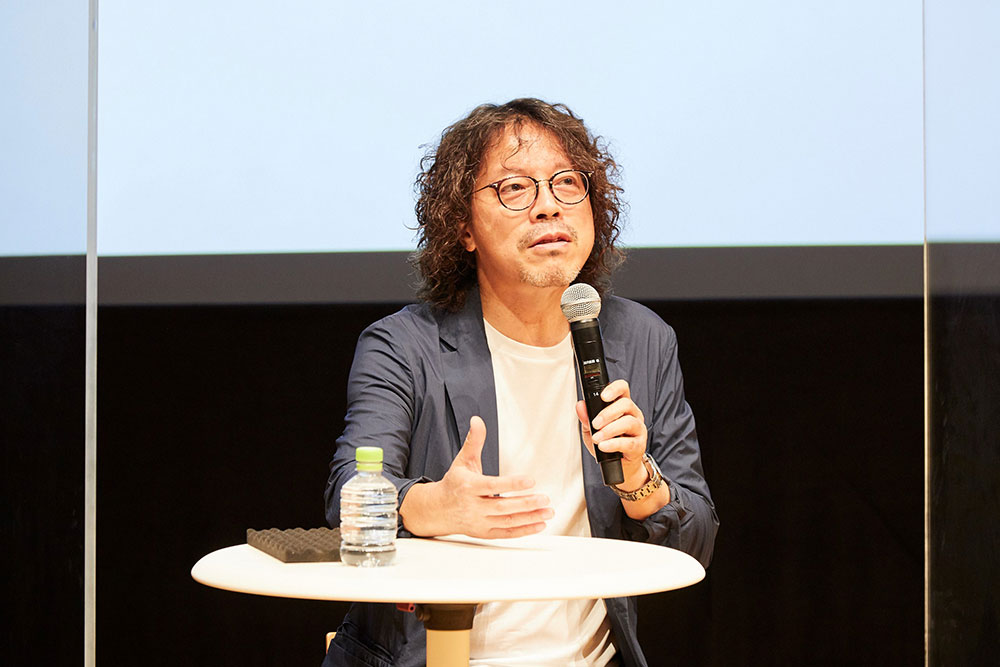
KURAMOTO said that through his conversation with URASAWA, he immediately had a plan to realize the program. KURAMOTO said: “At the time, I had yet to have any specific ideas, such as the filming method, but on hearing URASAWA’s idea, I was so thrilled that I had goose bumps. I was certain it is definitely what I myself want to watch and nobody has achieved yet. Above all, I thought it is a problem that URASAWA himself felt he has not been able to convey what he wants to convey. As I am involved in creating TV programs, I have a strong motivation for creating and showing something no one has ever seen before, and I was certain that I am the only one who can give shape to URASAWA’s thought in a TV program.” To realize the program, they visited various TV stations with the program proposal, and it was accepted by NHK. The project began to become a reality.
The talk then turned to how the unique filming and structure of Manben came into being. The meticulous recording of each manga artist’s manga production process, one of the features of Manben, is made possible by remotely controlled video cameras installed in their workspaces. A minimum required number of video cameras are in positions, such as above, to the left, to the right, and at hand of the manga artist, such that they will not affect the artist working. The camera crew stay in a separate room, quietly watching until the artist finishes working. URASAWA came up with this method. Himself serving as a test subject in a simulation, he helped construct a system for capturing the production process in detail without disturbing it. Detailed rules were also drawn up, such as “not to stand behind artists at work.” URASAWA added, saying: “If you make artists aware that they are being filmed, it is impossible to capture realistic images of their actual work process. The first thing I wanted to achieve during the filming of Manben was to ensure that there is nobody around the manga artist. Any manga artist at work needs to concentrate on their work without having to feel the presence of anyone else, just like the crane weaving fabric in Tsuru no Ongaeshi (Crane’s return of a favor; a Japanese folktale in which a crane repays a man who helped her, by weaving beautiful fabric, telling him not to peep). At the same time, I asked the filming staff to ‘do filming as if making a documentary about the ecology of a prairie dog living in a hole.’ You can only capture the way the manga artist is working as usual in a relaxed state by not having them feel the presence of the cameras at all. I told them that we should seek to achieve that far.”
URASAWA and the guest manga artist in each episode frankly make discussions in the studio while watching selected scenes of filmed manga production process video — this is the basic structure of the Manben series. Deciding the structure of the program also took time to patiently negotiate with the program production side.
There were documentaries on manga artists produced before the Manben series. Most of them focused on “the image of a manga artist that the production side wants to show,” such as the artist struggling for creation, and the way of filming their drawing scenes generally lacked depth. NHK initially intended to follow the conventional style, but URASAWA wanted to take a different approach. KURAMOTO recalled, saying: “At the time, the NHK production team and myself had nothing but the experience we had gained through making that type of programs in the past. That is, filming in the studio is the main focus, with the close-up of the face of the artist when speaking. URASAWA said that is not the right thing. So, we decided to have URASAWA at our planning meeting to hear his idea.”
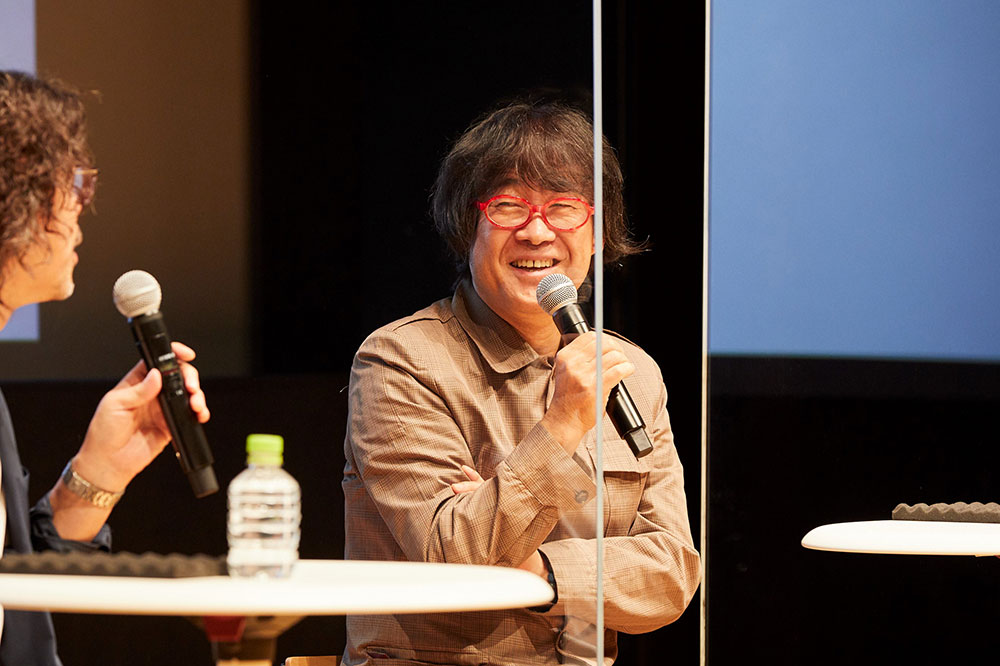
URASAWA at the meeting at NHK, taking into account the aspect ratio of the typical TV screen, gave a detailed presentation using the whiteboard in a conference room, explaining how to divide and use the screen. URASAWA said, recalling the time: “I said: The main section of the screen focuses on movements of the hands of the artist drawing pictures, showing without interruption as much as possible; the artist’s face does not have to be close-up and is just shown as a small wipe when having conversation; when manga terms unfamiliar to viewers are used during the conversation, footnotes will be provided at the bottom of the screen; during the time, the main section of the screen continues showing the drawing process in progress without interruption; and it is how I want to make the program. By using this style, I thought we can realize ‘starting from five and hopefully conveying up to 10,’ rather than ‘starting from zero and conveying up to one.’” URASAWA resulted in being much involved in the video editing work for selecting images from the filmed production process scenes.
In parallel with building the filming system, planning a pilot version (“Season 0”) was underway. Having the guts to agree to be the first guests in the unprecedented program were YAMASHITA Kazumi and KAWAGUCHI Kaiji. This pilot version was broadcast in 2014, followed by the start of the program’s regular broadcasting (“Season 1”) in 2015. The program has continued for four seasons up to the current Manben neo series.
URASAWA is in principle responsible for asking manga artists to appear in the program. He says that the ratio of obtaining their agreements is not high. “They are aware it is not easy to appear in this program. If they agree, it means they have the courage. I can’t force them to do so. I want more manga artists to appear in the program and I will look for the opportunities whenever possible.” KURAMOTO added, saying: “Each episode wonderfully features the guest artist. I’m especially grateful that several elderly master artists agreed to appear and allowed us to see the details of their drawing styles,” stressing the significance of having been able to record them.
The Grand Prize-winning episode featuring YASUHIKO Yoshikazu is a footage of his drawing process of Inui to Tatsumi -Zabaikaru Senki- (Inui and Tatsumi: Transbaikal War Chronicle; being serialized in Monthly Afternoon magazine by Kodansha Ltd. from 2019), which is an ambitious work that YASUHIKO started after his 70th birthday telling that it will be his “last serialization.” Each manga artist has their own method of drawing. In YASUHIKO’s case, he does not prepare manga storyboards, called “name” in Japanese, that is, drafts of storylines, panel layouts, and so on. He instead directly draws with a brush on prepared paper. As the lines of his brush strokes are overlapped and extended on the blank sheet of paper, a human gradually comes into existence, given life and energy, and finally looks moving vibrantly. A snowy night is depicted not by drawing white spots with white ink, but inking the blank space in black with several small spots left blank, intended to make them snowflakes dancing in the air. The drawing method is very stunning and moving, representing YASUHIKO’s exquisite techniques that even those who are familiar with his works and achievements have never seen before.

URASAWA aimed to make a TV program focusing on “the moment when lines of manga are drawn on a blank sheet of paper” by a manga artist, from the perspective of a manga artist himself, closely follow the process and accurately analyze the uniqueness and excellence of their techniques. KURAMOTO’s sympathy with URASAWA’s aim was joined by UEDA’s prowess, resulting in the Manben series, which involves a groundbreaking method of video documentation that allows the viewers to share the moment of “the birth of a manga.”
The episode featuring YASUHIKO is currently redistributed worldwide on NHK On Demand and the response from viewers overseas is great, UEDA said. URASAWA also mentioned that paper and pen (brush, instead, for YASUHIKO) to draw manga is easy to obtain, especially in countries where digital drawing environment is not easily made available. He said: “I also began drawing that way when I was a child. It is a great thing that the two simple tools alone can create an infinite world. I hope it will be recognized by people around the world.”
ITO Yu, acting as facilitator, commented on manga as cultural legacies, saying: “The art of manga has been passed down and developed by people who saw someone else’s creation and thought they may be able to make their own, and then stole, in a positive sense, various methods of expression and appropriately used them by understanding how to use them to express and convey as they want. I think Manben has been playing a role of passing down the manga culture more clearly through television in Japan and around the world. In this respect, I’ve recognized once again that the program has a high affinity with the manga culture.”

KURAMOTO said that he noticed something special when analyzing feedback on the program from the viewers mainly via social media sites during and after each broadcast. He said: “The program is watched by aspiring manga artists, professional manga artists, their fans, and, of course, many manga enthusiasts. In addition, there are also a very large number of tweets from people who usually have little contact with manga, who said that they tuned in to watch the program on TV by chance and were very moved. Even if they are not interested [in manga], exposure to the program, even a little, will somehow linger in their mind, and it may even motivate them to do their own work harder. I’m certain the program has that amount of passion. I’m happy we were able to have the program aired by NHK, which broadcasts nationwide and can even distribute worldwide.”
After discussing various topics, in concluding the talk session, the three speakers made closing remarks. UEDA talked about his future plans for the program, saying: “First of all, I want to steadily continue shooting footage of various fantastic manga artists, even though it is challenging. I also want to create a special, slightly evolved, program, for example. What’s more, we have yet to focus much on artists who are good at period dramas and drawing kimonos, so I want to feature a wider variety of genres to entertain the viewers more.”
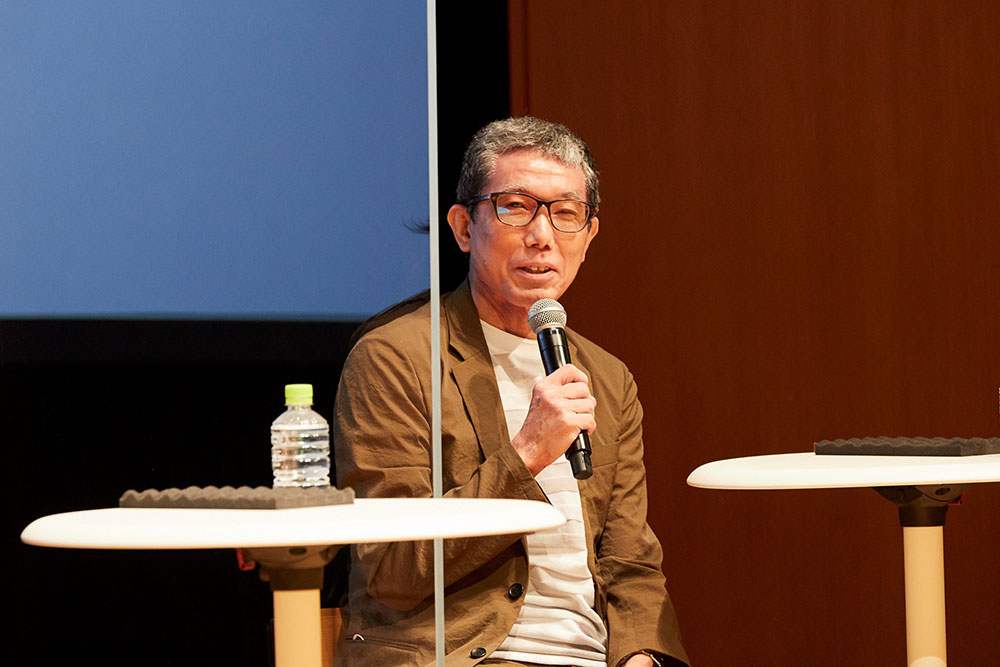
KURAMOTO said: “Now that we have got an environment where people around the world can watch the program, I expect Manben will attract more viewers and also gain more fans overseas, becoming a base for providing information on Japanese manga and extending its influence. Basically, I want to continue as long as possible at the current pace the current style in which URASAWA delves into and draws out incredible things about each manga artist at work. To do so, I do hope that we will have other artists who agree to appear in the program.”
Lastly, URASAWA explained his fundamental motivation for continuing to make this program, saying: “It may sound a little too cool, but I wanted to return the favor.” He also said: “I was born to a poor family and started drawing manga with pencil on paper as soon as reading TEZUKA Osamu’s Janguru Taitei (Jungle Emperor, also known as Kimba the White Lion) (1950–1954) and Tetsuwan Atomu (Astro Boy) (1952–1968). I started that way and now I am here, being able to make a living from drawing manga. I strongly felt that I have to return the favor to manga. Also, I sang ending theme songs for the Manben series, with the lyrics that I wrote myself. In the ending theme song for the Manben neo, titled Manga Kaki no Ballad (Ballad of a manga artist), I sing near its end: “Dokoka de kaiteiru mohitori no boku e / kujikenai yoni” (To the other me who is drawing somewhere / don’t give up). This is exactly how I feel. If there is the other me who is lonely and struggling somewhere, I hope they will be encouraged somehow by watching this program. The wish is the driving force for me to continue this program.” When he finished speaking, the audience burst into applause.
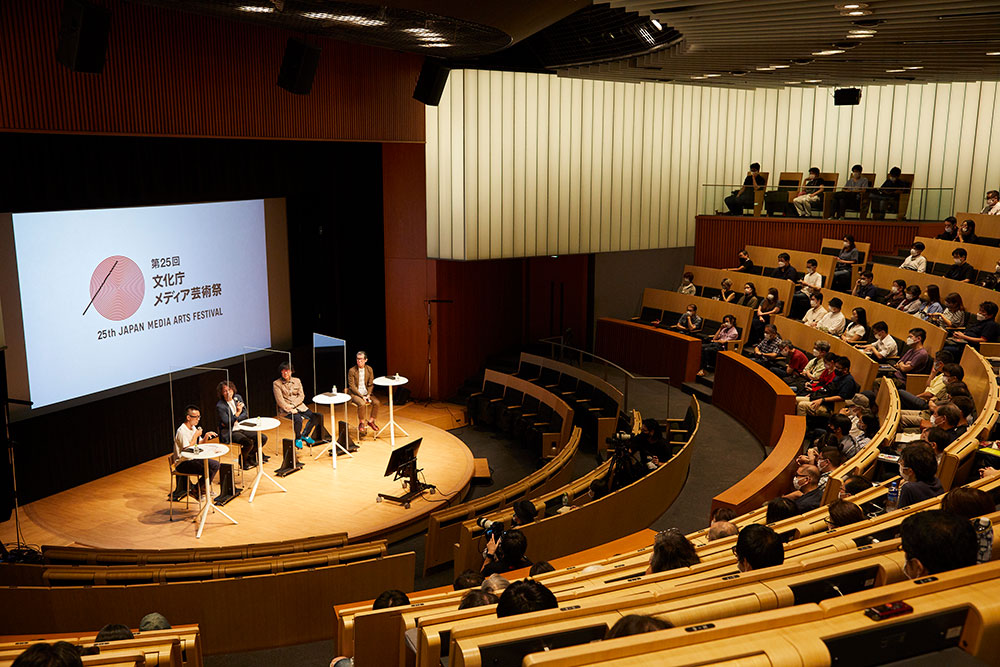
information
25th Japan Media Arts Festival
Talk Session on the Entertainment Division Grand Prize-winning Naoki Urasawa presents Manben neo -Yoshikazu Yasuhiko-
Date: Saturday, September 17, 2022
Hours: 13:00–14:30
Venue: 7th floor, Miraikan Hall at The National Museum of Emerging Science and Innovation (Miraikan)
Speakers:
UEDA Katsumi (Producer of Entertainment Division Grand Prize-winning Naoki Urasawa presents Manben neo -Yoshikazu Yasuhiko-)
KURAMOTO Mitsuru (Planner of Entertainment Division Grand Prize-winning Naoki Urasawa presents Manabu neo -Yoshikazu Yasuhiko-)
URASAWA Naoki (Manga artist)
ITO Yu (Associate professor at Kyoto Seika University/Manga Division selection member)
Organizer: The 25th Japan Media Arts Festival Executive Committee
https://j-mediaarts.jp/en/
*Video of the talk session was provided later on the above official website (https://j-mediaarts.jp/en/festival/talk-session/) with English subtitles.
*URL links were confirmed on November 9, 2022.